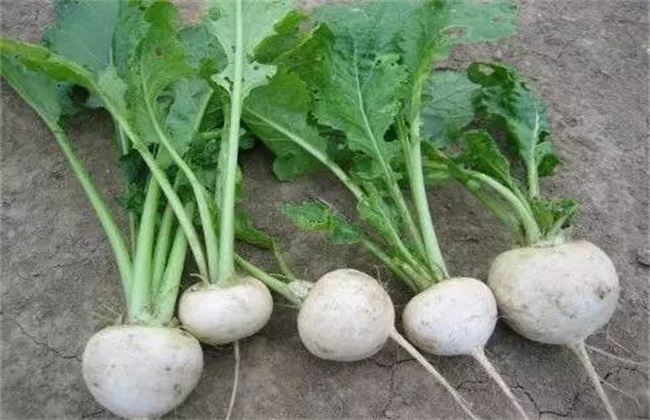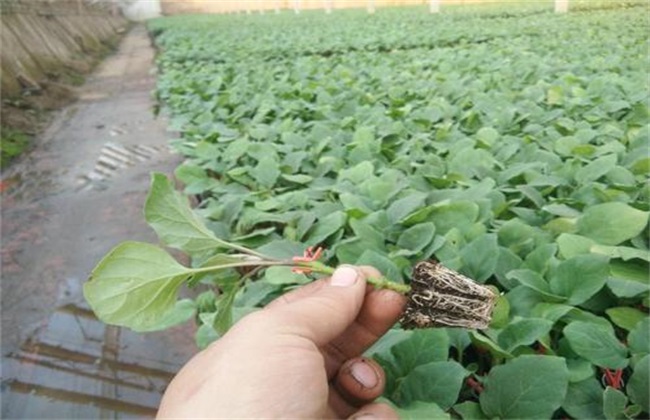High-yield cultivation techniques of radish in spring
Although radish belongs to the root vegetables of the Mid-Autumn Festival winter, but now with the maturity of planting technology, the use of greenhouse, basically can be planted all the year round. So now with the coming of spring, there are a lot of people growing radish in spring. So how can you grow radish in spring to get a high yield? The following editor brings you the high-yield cultivation techniques of radish in spring, let's have a look!

1. Sowing date
Before planting radish in spring, the first thing we should do is to select the variety and control the sowing date. The main varieties of radish in spring are those with few leaves, fast expansion and stable bolting. It is guaranteed that the weight of the rhizome can reach about two jin about two months after sowing. Then the average temperature of the day is stable above 10 degrees and the fine weather lasts for more than a week, then the seeds can be sown. If plastic film is planted in greenhouse, it should be sown from December to January. If it is cultivated with plastic film in the open field, it should be sowed before and after Ching Ming Festival.
2. Soil preparation and fertilization
Radish planting soil is also very critical, radish planting soil to maintain a good permeability, drainage and irrigation capacity and soft, sufficient fertility, the previous crop is not suitable for similar radish crops. Then before sowing, it is necessary to do a good job of soil preparation and disinfection, turn the soil 30 centimeters deep, spray chemicals for disinfection, and then prepare the bed for sowing. In the process of soil preparation, we should also carry out the work of applying base fertilizer. The base fertilizer is mainly fully mature farm manure, combined with an appropriate amount of compound fertilizer to ensure the growth of radish.
3. Planting density
The planting density needs our attention, and the row spacing should be kept at about 40*30cm. When sowing, sufficient human and animal dung should be poured into each hole, and then a seed should be sown in each hole, and then cover about one centimeter of fine soil. Do not sow too shallow, otherwise it is easy to lodge and affect the root shape. At the same time, sowing should not be too deep, too deep will delay the emergence speed of radish, resulting in a decline in the rate of strong seedlings. And we also need to use a nutrition bowl to cultivate prepared seedlings for replenishing seedlings. If the stubble is tense, it can also be transplanted directly. It is not only convenient for management, but also can improve the utilization rate of greenhouse facilities.
4. Field management
After sowing for a week or so, we should pay attention to sealing the greenhouse to promote the emergence of seedlings. And because the temperature change in early spring is relatively large, so we still need to do a good job of refining seedlings after finishing the seedlings. The temperature stays around 18 degrees during the day and 12 degrees at night. When the seedlings have about three true leaves, it is necessary to do a good job of replenishing seedlings. In the seedling stage, radish has little demand for fertilizer and water, so it does not need to be watered and fertilized. Then, after the later stage of growth, topdressing should be done twice or so. Fertilizer is generally based on nitrogen and potassium fertilizer, fertilizer should not be too much, avoid fertilizer damage, but not too little, otherwise it is easy to appear bran heart and early bolting phenomenon.
The above is a brief introduction to the high-yield cultivation techniques of radish in spring. That's all for today's introduction. This article is for reference only. I hope it can help you all.
Related
- Where is it suitable to grow horseradish in China? it is expected to see the middle altitude horseradish in Alishan.
- How to prevent tomato virus disease reasonably? (Control methods included)
- Many people like to plant towel gourd on the balcony. What are the main points of this method and management?
- What crops can chili peppers be mixed with?
- Fertilization techniques and matters needing attention in Tomato
- What are the grafting techniques for peach seedlings in spring?
- Harm and control methods of root swelling disease of Chinese cabbage
- What are the pests of sweet potatoes? How to prevent and cure it?
- Symptoms, causes and Control methods of navel Rot in Tomato
- The cause of "Cucumber rotten bibcock" in Farmers' planting Cucumber and its Control Plan



